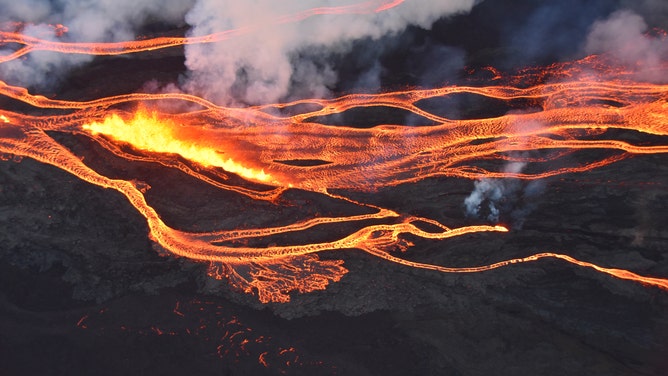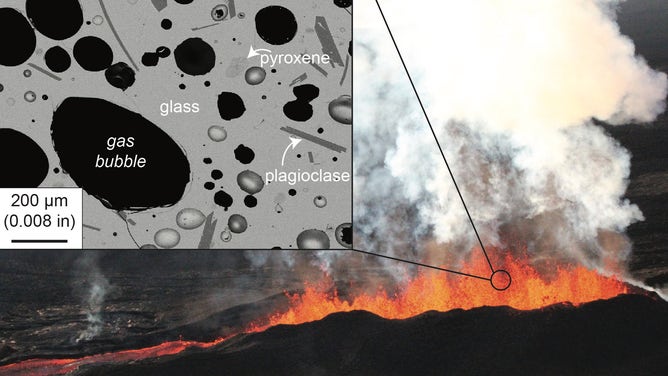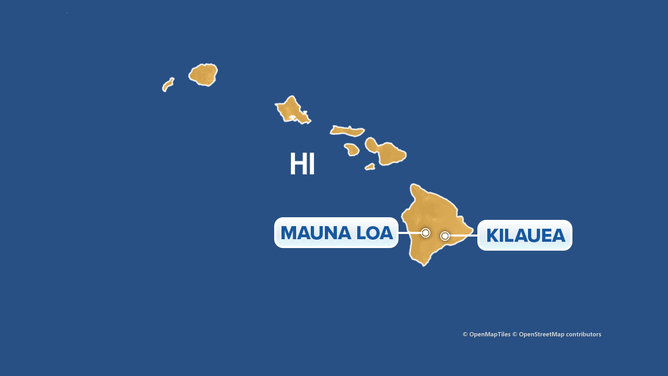Lava samples help scientists 'see' inside Mauna Loa volcano
Mauna Loa’s eruption in 2022 gave scientists the first opportunity to learn about the inner workings of the volcano since 1984 – the last time Mauna Loa erupted.
Mauna Loa eruption: See all of the most incredible volcano footage
The eruption of Mauna Loa, the world’s largest active volcano, began on November 27, after remaining quiet for nearly 40 years.
HONOLULU, Hawaii – For the first time in nearly 40 years, scientists were able to analyze magma erupting from the largest active volcano on Earth.
Mauna Loa in Hawaii erupted for about 12 days starting on Nov. 27, 2022, giving scientists the first chance to learn about the inner workings of the volcano since 1984 – the last time Mauna Loa erupted.
What the scientists discovered

A view from Mauna Loa, the world's largest active volcano, began to erupt overnight, prompting authorities to open shelters "as a precaution" on November 29, 2022 in Hawaii.
(United States Geological Survey / Getty Images)
Researchers found that the composition of lavas from Mauna Loa’s 2022 eruption was largely similar to those of its other eruptions dating back to 1843.
Lava from the 2022 eruption, however, had slightly lower average magnesium oxide (MgO) content than those of prior eruptions.
SATELLITE IMAGERY SHOW MAUNA LOA SPEWING LAVA, ASH AND GAS FROM SPACE
The MgO content of lava allows scientists to gauge how hot that magma may have been when it erupted as lava. Based on the lower average MgO content of lava from the Mauna Loa 2022 eruption, the lava measured approximately 2,111 degrees Fahrenheit.
Composition of the lava also indicates where the lava may have originated under the Earth’s surface. According to the USGS, the lava came from a new intrusion of homogenous magma.
How the lava was analyzed

Lava samples collected near Mauna Loa’s fissure 3 vent (shown in this December 7 overflight photo) are glassy and contain bubbles and some very small (200 microns or 0.008 inches long) minerals like plagioclase and pyroxene, as shown in the grey-scale microscope image inset.
(Kendra J. Lynn / USGS / FOX Weather)
Their analysis involved a number of facets, such as data from the Hawaiian Volcano Observatory’s (HVO) monitoring instruments being recorded during the eruption and direct observations and measurements from HVO field crews.
Another facet involved the collection of molten and solidified lava samples almost every day of the eruption for near-real-time analysis in laboratories, according to the USGS.

Map noting the locations of Mauna Loa, along with nearby sister volcano Kilauea.
(FOX Weather / FOX Weather)
The samples were analyzed by using multiple methods in a lab environment.
One method involved energy-dispersive X-ray (ED-XRF) analyses, which was done in near-real-time. USGS said these studies revealed the composition of the erupting magma and the magma’s subterranean origins.
Methods used after ED-XRF analyses were secondary electron micro-analysis (SEM) and electron probe micro-analysis (EPMA). SEM and EPMA gave scientists an opportunity to measure the compositions of minerals and glass on small scales.
